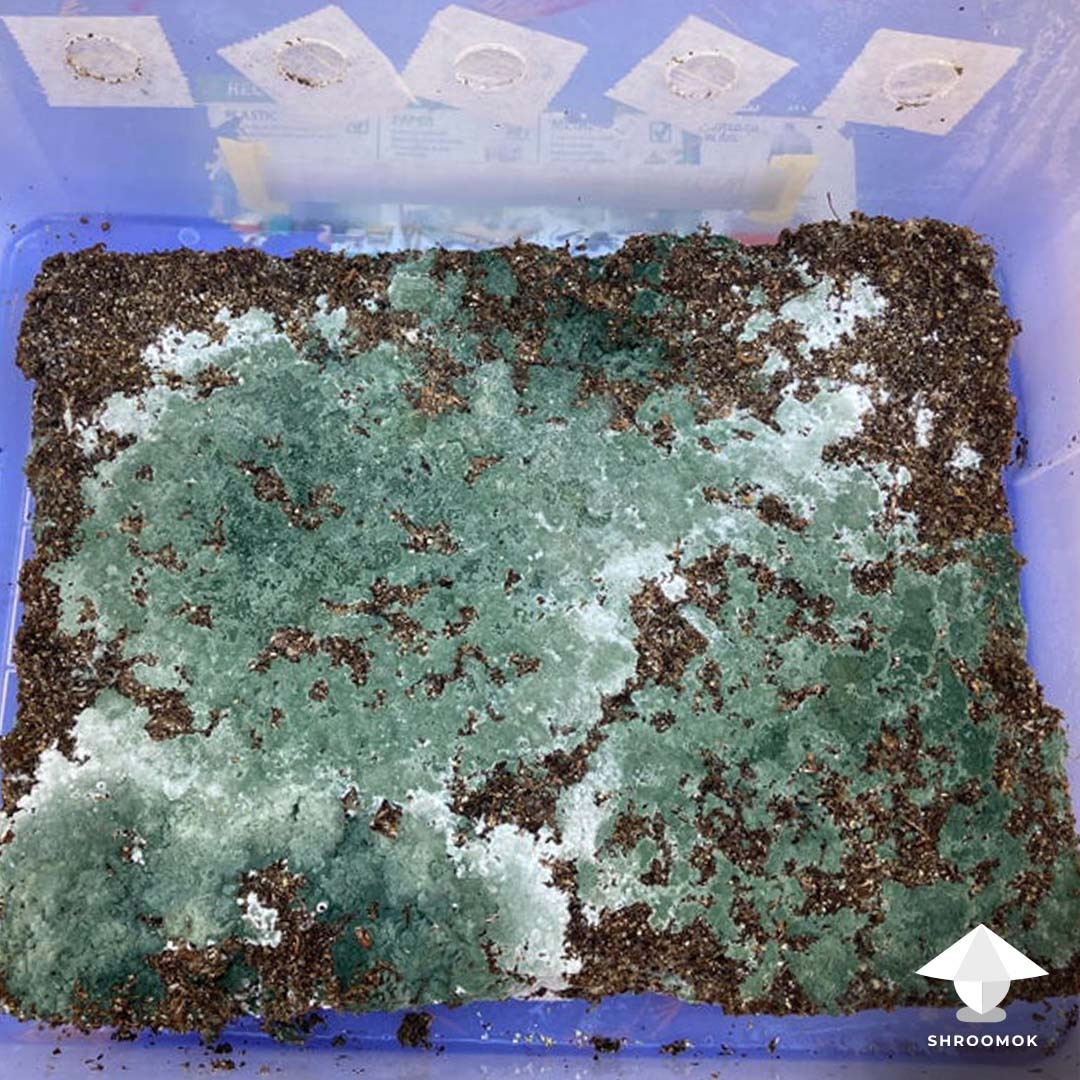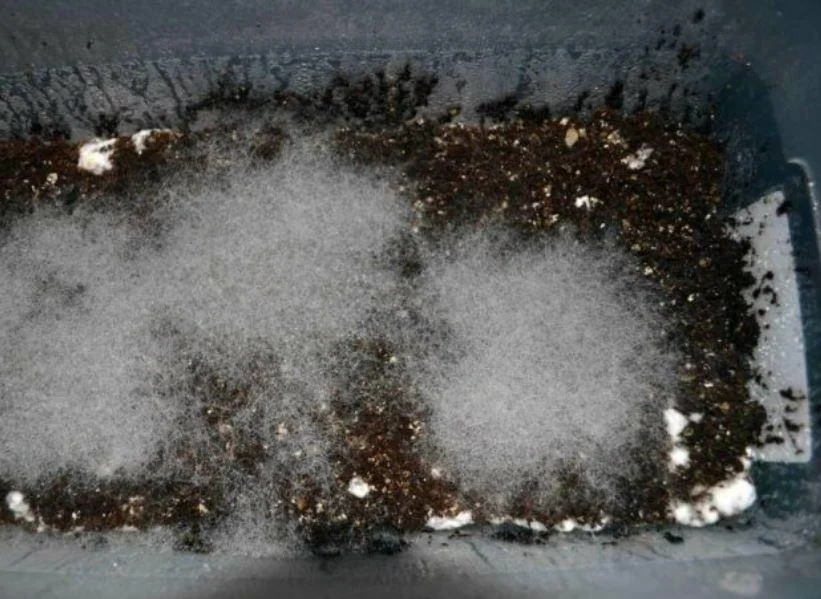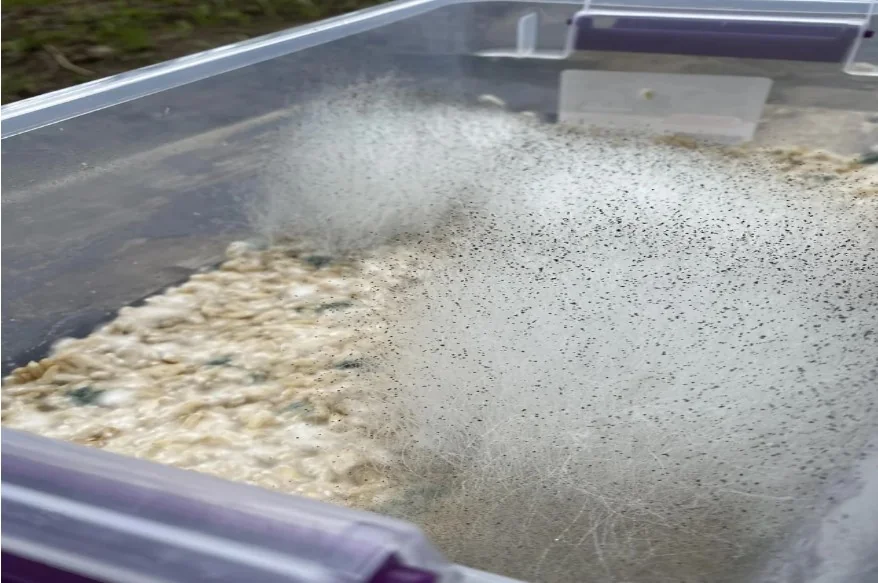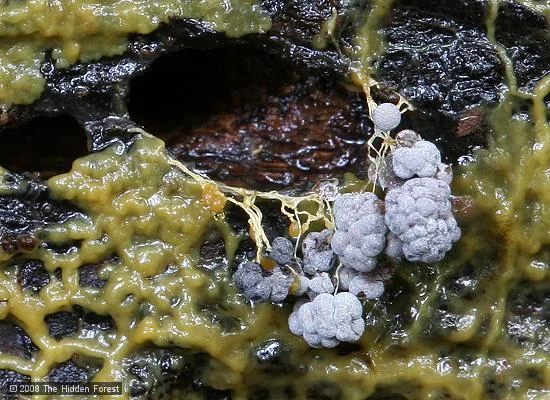Contamination 🦠
If you are cultivating mushrooms, you will run into contamination at some point. Below are some of the most common types of contamination we see along with tips on identifying them.
Trichoderma

- It always first appears as a bright fluorescent white gritty crust.
- It rapidly turns green usually within 24 hours of developing hyphae.
- Its growth patterns typically display irregular, ill-defined borders.
- It has a gritty and crust-like texture like dry cracked earth.
- It produces a powdery sporulation of a grayish-green dust cloud when disturbed.
You can read more about it here: reddit.com
Cobweb

New mushroom cultivators often mistake normal mycelium for cobweb mold due to inexperience. While cobweb mold is less common than it seems, new growers frequently misidentify it. In reality, less than 10% of suspected cobweb cases are true cobweb mold. If you are unsure, you should check out this awesome post or this post.
Pin Mold

Rhizopus stolonifer is identifiable by its fuzzy appearance due to the growth of sporangiophores. These structures produce black dots called sporangia, which contain the fungus’s spores. Under a microscope, it shows fast-growing, branching hyphae forming a mat-like structure and produces numerous spherical asexual spores known as sporangiospores. You can read more about it here.
Slime Mold

These are not super common. There are over 1,200 species of plasmodial slime molds in Myxomycetes, but only a few are commonly encountered. Identifying slime-fruiting bodies relies heavily on their maturity. Unless you find fully mature, dehisced (opened) fruiting bodies, the specimen may change significantly within 12-24 hours, making identification difficult until after maturation and dehiscence, which can take several days. Active plasmodia are unidentifiable, and their fruiting is not guaranteed. Very young plasmodia are also unidentifiable but will soon become so as they develop. You can read more here.
What to do if I have contamination?
If you have a tub or grain spawn with contamination, your safest bet is to dispose of it OUTSIDE OF YOUR HOME. You do not want to open that indoors and risk spreading it to the rest of your grow. Some growers have luck cutting out the contaminated part and dousing it in hydrogen peroxide, but that is not a guarantee and you run a risk of spreading it.
Once you dispose of it, you should re-visit your sterilization processes up to this point to find out what introduced this. Was your liquid culture bad? Test it on agar to be sure. How about your grain? Do you need to sterilize it longer? Maybe it is your sterile technique. Look into how to improve your sterile technique to reduce your rates of contamination when inoculating your grain or substrate. ContamFam is a great resource for getting a better understanding of both contamination and sterile techniques.
